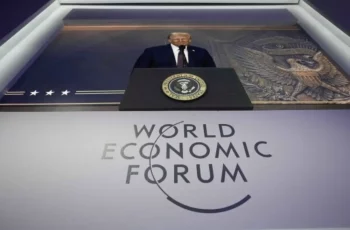
As the world hurtles towards an increasingly multipolar international order, the BRICS summit stands as a significant milestone in shaping the future of global governance, economic cooperation, and geopolitical alignments. With recent geopolitical tensions, shifts in alliances, and the expansion of the BRICS grouping, this summit becomes a focal point for discussions on reforming international institutions, balancing power among emerging economies, and addressing pressing global challenges.
The Context: A World in Transition
In recent years, geopolitical dynamics have undergone profound changes. The reprisal against Iran, the ongoing conflict in Ukraine, tensions in the Middle East, and the rise of non-Western powers have all contributed to a shifting landscape that challenges the dominance of traditional Western-led institutions. The Summit, therefore, is not merely a routine gathering but a reflection of these tectonic shifts.
Notably, the first meeting of major non-Western leaders following Iran’s recent confrontation underscores the strategic importance of the event. While Iran, newly inducted into BRICS last year, has not officially acknowledged its defeat in regional conflicts, the diplomatic signals point towards a subtle yet impactful success for the US and its allies. This is part of a broader long-term strategy aimed at systematically diminishing the influence of what they perceive as adversaries – an approach that, while effective, carries implications for the cohesion and unity of the non-Western bloc.
BRICS: Evolution and Internal Divergence
Over the past three years, BRICS has experienced rapid growth and diversification, transforming from a relatively cohesive economic alliance into a sprawling, heterogeneous assemblage of nations with varying interests and geopolitical orientations. The inclusion of new members – such as Argentina, Egypt, Ethiopia, the United Arab Emirates, and others – has expanded the group’s reach but also introduced new complexities.
This enlargement has led to considerable internal debate. Divergent views on key issues – such as the conflict in Ukraine, the situation in Gaza, and regional security – highlight the challenges of maintaining consensus amid increasing heterogeneity. For example, countries like South Africa and Brazil have expressed cautious positions, emphasizing dialogue and peaceful resolution, whereas others may lean towards more assertive stances.
Official statements, such as Russia’s Foreign Minister Sergey Lavrov’s remarks about balancing interests, reflect an acknowledgment of these tensions. Sergey Ryabkov’s comment about managing bilateral issues without undermining collective goals underscores the delicate diplomatic dance BRICS must perform. Despite internal disagreements, the group strives to project unity, especially as it seeks to position itself as a credible alternative to Western-led institutions.
BRICS as a Pillar of Multipolarity
Russia’s vision of BRICS as a tool to weaken Western dominance underscores its broader aim of fostering a truly multipolar international order. Russia’s Foreign Minister Lavrov emphasizes BRICS’s role in creating independent mechanisms for foreign trade, logistics, culture, education, and sports – elements that collectively challenge the Western-centric global system.
In practice, however, BRICS functions more as a forum for dialogue and coordination rather than a unified geopolitical bloc. It serves as a platform for member states to express their interests and develop shared perspectives, especially on issues pertinent to the Global South. For many nations, BRICS offers an avenue to diversify their international relations, reduce dependence on Western institutions, and advocate for reforms that reflect contemporary realities.
The Summit, therefore, is crucial for addressing specific issues related to interaction with the Global South, including economic cooperation, infrastructure development, and cultural exchanges. It also provides an opportunity to craft a collective stance on reforming global governance structures, which remains a contentious and complex process.
The Geopolitical Challenge: Managing Divergent Interests
One of the core challenges facing BRICS is its increasing internal diversity. With more members, questions about decision-making processes – particularly the principle of consensus—become more pressing. As the group expands, the likelihood of vetoes or blocking actions grows, complicating collective decision-making.
For instance, Brazil’s de facto veto of Venezuela’s accession highlights the fragility of consensus. Such disagreements raise questions about whether majority voting or alternative decision-making mechanisms might be necessary. Some experts suggest establishing a “semi-permanent” category of members, elected for longer terms without veto rights, or creating parallel structures like a BRICS Council that could bypass traditional UN or other Western-dominated institutions.
Reform of global governance bodies, especially the United Nations Security Council, remains a central theme. All BRICS members agree that the current UN structure is outdated, reflecting the post-World War II balance of power rather than today’s multipolar realities. However, consensus on how to reform the Security Council – whether through expanding permanent seats, creating new categories of membership, or establishing alternative bodies – is elusive.
to be continued










Pingback: The BRICS Summit: Navigating A Complex Global Landscape (II)
Pingback: The BRICS Summit: Navigating A Complex Global Landscape In A Multipolar World (I + II) – Emma Olive
Pingback: La Cumbre del BRICS 2025: Un panorama global complejo en un mundo multipolar – El Rugido del Sur Global